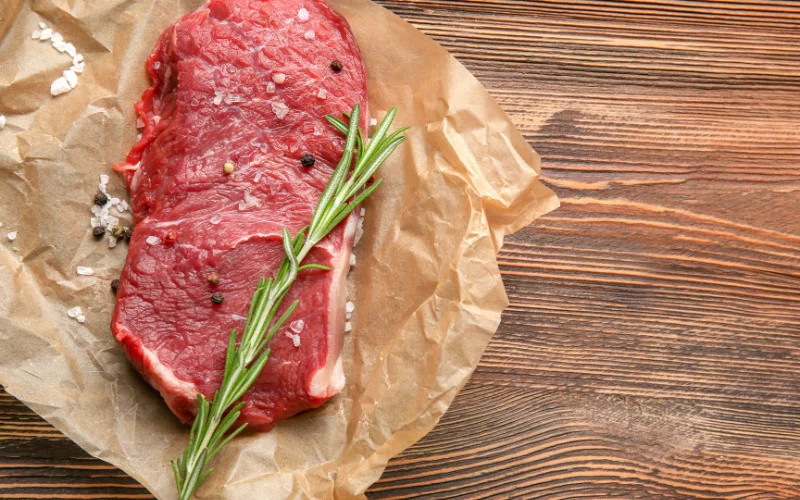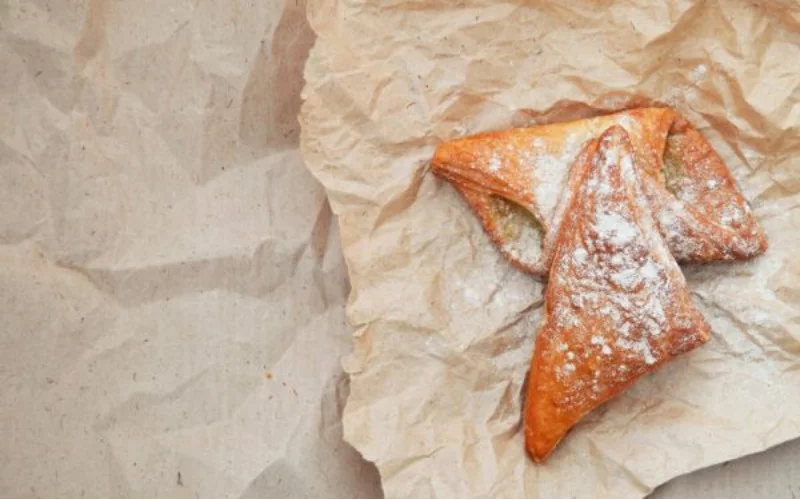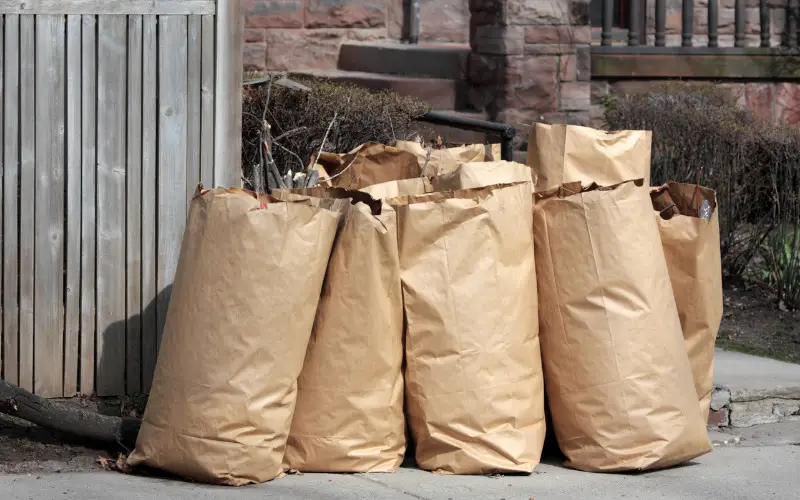Parchment paper can be used for baking, storing, freezing, and other cooking processes because of its grease property.
Parchment paper can be found in almost every home, but is parchment paper compostable and recyclable? Parchment paper is made from cellulose fibers from trees and is coated with silicone. With this information, you should know that parchment paper is compostable.
We have provided a detailed article to help you learn more about parchment paper, its composition, and if it can be recycled.
What is Parchment Paper Made of?
Parchment paper is cellulose from trees and plants like flax and cotton. The cellulose in parchment paper makes it resistant to moisture grease and makes it non-sticky this is why it is perfect for baking. Other significant features of parchment paper are that it is resistant to heat, is odorless, tasteless, and flexible.
There are two types of chlorine, bleached and unbleached. To make it white, bleached chlorine has been treated with chlorine, while unbleached parchment paper is brown as it has not been treated with chlorine.
How is Parchment Paper Made?
Parchment paper is made through a process called the parchmentization of paper. This process involves four basic stages.
- Preparing the unsized paper
- Parchmentization of the unsized paper
- Coating
- Packaging
Preparing the Unsized Paper
Unsized papers have no fillers added to them before or after production. Unsized paper absorbs water easily and immediately makes it suitable for parchmentization.
Unsized paper is sourced from cellulose fibers from trees and plants; these materials are then processed to become papers without the addition of fillers.
The chemical process of making paper is carried out by removing the barks of logs in a steel drum and chipping the wood into smaller pieces in a wood chipper.
The pieces of wood are sorted out according to size and then stored for further processing. The barks of the logs will be used as fuel as they cannot be used to make paper.
These wood chips are now boiled at a very high temperature in a pressure cooker containing some chemicals to separate the lignin from the fiber and the cellulose-binding these two substances together. After this process, the pulp is formed.
The logs are debarked and directly made into pulp by grinding in a rotating stone grinder in mechanical pulling. Compared to chemical pulling, not much fiber is lost in this mechanical process as most of the fiber is present in the pulp made by grinding the logs.
The pulps are then bleached with chlorine into a white color or unbleached and left brown; other purified and deinked pulps like newspaper are added with the main pulp.
The addition of recycled pulp can be helpful during chemical processing as the processed pulp has lost a lot of fiber that will need to be replenished. To stop environmental degradation, these recycled pulps are used in place of wood fibers.
The pulp is passed through a refining process to improve the fiber bonding between the pulp. A mixture is then made by adding water to the pulp; it contains 99% water and 1% fiber. This pulp is then cleaned, screened, and sent to the papermaking machine.
At the papermaking machine, water is squeezed out of the pulp and then passed through some mechanical process where the pulp is pressed and rolled to squeeze out more water and form paper.
The paper is eventually passed through a dryer to eliminate the water further and then passed through calendars (metal rollers) to give it an even shape and thickness.
Parchmentization
Before the parchmentization process begins, the unsized paper is checked for defects. The unsized paper is then passed through a bath containing sulfuric acid, phosphoric acid, or zinc chloride for seconds; this acid bath aims to dissolve the fiber’s surface into a thick mass to close the space, allowing water to pass through.
The paper passed through the acid bath will then be washed and dried to remove chemicals on the paper. Parchment paper is now formed, and it no longer melts when soaked in water as it is now greaseproof, tough, and waterproof. It has all these features thanks to the parchmentization process.
Addition of Extra Coating
The coating is applied to newly made parchment paper to modify its features like its waterproof ability further. The parchment paper is sprayed with food-grade silicone and then passed through dryers for proper baking. The silicone allows the parchment paper to be used up to a temperature of 450°F, and it also modifies its none sticky property.
Packaging
After the above process, parchment paper is cut into different shapes and sizes, ready to be distributed.
Is Parchment Paper Compostable?

If you love cooking or baking, then parchment paper is readily available in your home. If you are worried about being eco-friendly, you should know that parchment paper is environmentally friendly.
While parchment paper is environmentally friendly, not all of them are compostable. Parchment paper coated with silicone may not be entirely compostable as a conclusion has not been made yet.
Compostable parchment paper will take a lot of time to be broken down, but you can cut the parchment paper into pieces to speed up the process. Fortunately, uncoated parchment paper is also compostable.
It is best to use unbleached (brown) parchment paper instead of bleached (white) parchment paper. While the bleached parchment paper is compostable, it may cause some health issues as it contains chlorine, but the unbleached parchment is entirely compostable and safe.
Is Parchment Paper Biodegradable?
Biodegradable materials can be broken down into simple molecules by micro-organisms and bacteria.
Because parchment paper contains silicone, it cannot be broken down by micro-organisms, but since silicone is inert, it doesn’t harm the environment.
However, uncoated parchment paper is biodegradable as bacteria and micro-organisms can easily break it down since they don’t contain silicone.
Can Parchment Paper Be Recycled?
Recyclable materials are materials that can be reused. Unlike regular paper, parchment paper cannot be recycled because it is coated with silicone. This silicone is difficult to separate from the parchment paper, making it impossible to recycle this material.
Fortunately, you can recycle the brown packaging paper with your parchment as it is not coated. But paper stained with oil and other impurities should not be put in the recycling bin. Recyclable paper is being used to make more paper.
How Do You Dispose of Parchment Paper?
If you have a compost food pile where you dispose of food remains, you can dispose of your used parchment in this bin. To make the parchment paper compost faster, tear it into smaller pieces and dump it in your green bin.
If you do not own a green bin or a compostable pile, you can dispose of parchment paper in your regular bin. And remember, do not dispose of parchment paper in a recycling bin; its non-sticky property and various cooking activities make it unfit for recycling.
Is Parchment Paper Better For The Environment Than Aluminum Foil?

In this case, parchment paper has the upper hand as it can be disposed of in a compostable pile where it can be broken down. However, parchment paper with residues from baking and cooking cannot go to the compost pile and will need to be disposed of.
Aluminum foil, however, is not biodegradable or compostable. But it can be recycled just like aluminum cans. But recycling aluminum foil can be frustrating as it can only be cleaned and not reused for a manufacturing process.
Since most aluminum foil is used for cooking, recyclers will have to remove the foil contaminated with residues and clean the slightly dirty ones.
As most of the aluminum foil is contaminated with cooking residues, a lot of foil is thrown away, and only a few are recycled.
What Brands Are Considered Biodegradable And Compostable?
If you want to help the environment and still bake and cook freely, you should consider purchasing parchment papers from brands that manufacture biodegradable and compostable products. Some of these brands include;
- Smart take
- Reynolds
- Hire
- Baklicious
- Beyond
These brands manufacture unbleached parchment paper that is eco-friendly and can still be used for baking and cooking.
Conclusion
Parchment paper is vital to every baker and cool, but what if they are not environmentally friendly? There are two types of parchment paper, bleached (treated) and unbleached (non-treated). The unbleached parchment paper is safer and compostable compared to the bleached one.
We have explained how parchment paper is made and all the chemicals involved in the process. Silicone gives parchment paper its non-stick and waterproof property, making this material difficult to compost and impossible to recycle. You can purchase parchment from brands that manufacture compostable and biodegradable products.
Helpful Links:
- Pros and Cons of Dethatching Lawn
- Where To Set Up Inflatable Pools
- What is the Easiest Way to Cut Tall Grass
- Can Outdoor Heaters be Left Out in the Rain?
- What is the Best Way to Waterproof a Shower Wall?
We hope this article has helped you discover if parchment paper is compostable and recyclable. You may also want to check the Pros and Cons of Dethatching Lawn.
I will love to hear from you if you have any other suggestions on Leaf Solution Reviews. All you have to do is comment below. Kindly reach out to people by sharing this post on social media.
If you liked this article, then please follow us on Facebook, Instagram, and Pinterest.

